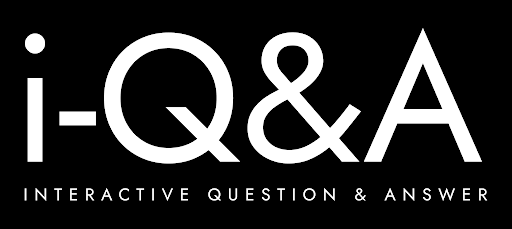
Have you ever wondered why two different creators can quote wildly different prices for the same 30-second explainer video? One person might suggest £1,600 while another comes back with £6,000 or more. It’s not just guesswork—there’s a structure behind these figures, and knowing how to set or assess a fair price can save a lot of confusion and stress for both creators and clients.
In this blog, we’ll break down the real costs of producing an explainer video, explain what drives the price, and share practical frameworks you can use to set fair expectations in 2025. Whether you’re producing the video or buying one, this article is here to give you clarity and confidence.
What Counts as a 30-Second Explainer?
A 30-second explainer is short but far from simple. Typically, you’re working with around 75 words of narration or text on screen. Within that half a minute you still need to:
- Define the message clearly.
- Write a script.
- Create a storyboard or plan.
- Build or source assets (illustrations, characters, icons, or footage).
- Animate or film.
- Add sound design, music, and voiceover.
- Allow for at least one or two revision rounds.
Even when brief, each stage involves professional time, creativity, and resources. That’s why costs don’t scale down neatly by seconds; the setup and design work remain essential.
Typical Price Ranges in 2025
The market for explainer videos spans a wide range, depending on scope and production values. Here’s what you can expect:
- Studios and agencies (custom motion graphics): For polished work with professional project management, £1,600–£4,900 ($2,000–$6,000) for 30 seconds is common. If you add characters, 3D elements, or advanced storytelling, costs rise quickly.
- Freelancer teams: A group of specialists covering script, design, animation, and voiceover may total £2,000–£9,500 ($2,500–$12,000) depending on deadlines and revisions.
- DIY and AI tools: Subscription models can cost as little as £25 a month. However, you’ll be investing your own time and often sacrificing uniqueness.
- High-end and specialist projects: Live action shoots, complex 3D, or detailed character animation can push 30-second videos beyond £8,000–£15,000.
In the UK specifically, a 60-second animated explainer often sits between £4,000 and £10,000. Halving that time doesn’t halve the cost, as planning, concept work, and design remain the same. Expect £2,000–£6,000 for a well-made 30-second video without characters.
Pricing Models: Which Works Best?
When quoting or assessing a project, the pricing model makes a difference.
Hourly
- Best for: Open-ended briefs or projects likely to shift.
- Pros: Flexible and transparent—clients see where time goes.
- Cons: Professionals working quickly may feel penalised, and clients may worry about costs spiralling.
Day Rate
- Best for: Compact sprints where the creator reserves entire days.
- Pros: Clear structure and scheduling.
- Cons: If a project finishes early, you may still be billed for the reserved time.
Fixed Project Price
- Best for: Well-defined briefs with capped revision rounds.
- Pros: Predictable totals and simpler invoicing.
- Cons: If the scope changes, the creator carries the risk unless change orders are agreed in advance.
A popular hybrid is fixed price plus change orders, where anything outside the agreed scope (extra formats, new revisions, or rush delivery) follows a published rate card.
What Drives the Price Up or Down?
Pricing follows the work involved. The main factors are:
- Concept and scripting: Do you need deep research and discovery, or is the message already distilled?
- Design and animation style: Simple icons and typography cost far less than detailed 2D characters or intricate 3D.
- Voiceover and music: Stock music libraries keep costs down; bespoke scores or professional voice talent increase them.
- Revisions: Two structured rounds at storyboard and animation are efficient. Unlimited changes inflate budgets and delay delivery.
- Deadlines: Rush projects often add a 15–30% premium.
- Deliverables: Multiple aspect ratios, subtitles, and localised versions all add production time.
Style Choices and Their Impact
Different video styles carry very different costs:
- Motion graphics (icons, shapes, text): £1,600–£4,900 for 30 seconds of polished work.
- 2D character animation: Increases rapidly due to design, rigging, and animation complexity.
- Whiteboard or infographic: Often cheaper but may look dated for some brands.
- Live-action: Crew, kit, and editing costs can make even short shoots expensive.
- Screen demos or AI avatars: Budget-friendly, useful for training and product walkthroughs.
A Practical Framework for Pricing a 30-Second Video
Here’s a simple way to scope and price a short explainer:
- Define the deliverables: Do you need multiple aspect ratios (16:9, 1:1, 9:16)? Subtitles? Specific formats?
- Write the scope: Script drafts, storyboard rounds, asset requirements, animation style, and sound.
- Choose a pricing model: Fixed fee, hourly cap, or day rate.
- Plan realistic time: Script 4–6 hours, storyboard 8–14, animation 10–20, audio 3–6, plus a buffer for rendering and feedback.
- Set revision caps: Two at storyboard, two at animation, then polish only.
Using this, many clients find £2,000–£6,000 fair for a 30-second, motion graphics-based explainer handled by a skilled freelancer or boutique studio.
Example Packages
To give an idea of how different scopes look:
- Starter Motion Graphics (£2,800–£4,400 / $3,500–$5,500): Script polish, storyboard, motion graphics with no characters, licensed music, captions, two rounds of revisions, and a master export plus one social cut.
- Screen Demo + VO (£1,400–£2,800 / $1,800–$3,500): Screen capture with light animation, narration, music, captions, and two formats.
- Premium Character Animation (£4,700–£7,900 / $6,000–$10,000+): Custom 2D characters, script, storyboard, animation, voiceover, and sound design.
How to Trim Costs Without Sacrificing Quality
If budgets are tight, you can keep the project cost-effective by:
- Locking the script before design to prevent wasted work.
- Choosing a cost-efficient style such as motion graphics.
- Supplying brand assets like fonts, logos, and UI screens to save time.
- Planning all deliverables upfront instead of adding them later.
- Centralising feedback with one decision-maker.
Avoiding rush deadlines where possible.
Timelines and Teams
A typical 30-second motion graphics explainer (without characters) runs across four weeks:
- Week 1: Script and approval.
- Week 2: Storyboard and style frames.
- Week 3: Animation with voiceover.
- Week 4: Final sound, revisions, and delivery.
Who you work with also shapes the budget:
- DIY tools (£40–£400): Fast but generic.
- Freelancers (£2,000–£9,500): Professional but require coordination.
- Studios (£3,600–£8,000 for 60s, scaled for 30s): Provide end-to-end production with project management.
- Premium agencies (£12,000+): Best for complex campaigns, strategy, and large-scale deliverables.
The Bottom Line for 2025
A fair range for a professional 30-second explainer video in 2025 is £1,600–£4,900 ($2,000–$6,000) when using polished motion graphics with capped revisions. More elaborate work involving characters, 3D, or live action will increase this significantly, while templates and AI tools can deliver budget results at the cost of uniqueness.
The key to fair pricing is clear scope and structured revisions. Define what you want at the start, agree on the process, and costs become predictable. For creators, this avoids undercharging; for clients, it avoids nasty surprises.
